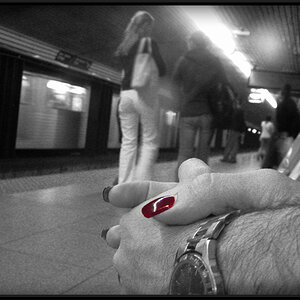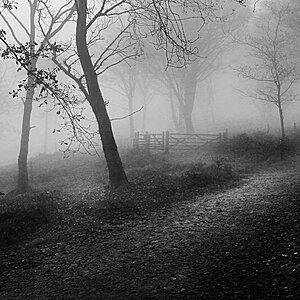Navigation
Install the app
How to install the app on iOS
Follow along with the video below to see how to install our site as a web app on your home screen.

Note: This feature currently requires accessing the site using the built-in Safari browser.
More options
You are using an out of date browser. It may not display this or other websites correctly.
You should upgrade or use an alternative browser.
You should upgrade or use an alternative browser.
up rating iso?
- Thread starter t1123
- Start date
Helen B
TPF Noob!
- Joined
- Sep 16, 2007
- Messages
- 3,296
- Reaction score
- 467
- Location
- Hell's Kitchen, New York
- Can others edit my Photos
- Photos NOT OK to edit
Just changing the ISO setting on you camera's meter will not change the contrast much, if at all. Raising the ISO setting for anything other than slide (reversal) film is likely to result in poorer image quality (higher graininess and less shadow detail). With slide film it can improve image quality a little, but this is really a question of metering technique for optimum exposure rather than true ISO.
Dramatically lowering the ISO setting on the meter for colour negative film can lower contrast (with no change in development).
The increase in contrast that you are referring to is likely to be because of a change in development. As you increase development (often called 'pushing' the film), you increase contrast (in general). This increase in contrast leads to an increase in effective film speed (EI, see below). Therefore if you want to increase contrast you can do it by doing two things: set the meter to a higher speed setting and develop the film more. Lowering contrast can be done by doing the opposite. These methods of contrast control are most commonly done with B&W negative film, but they are also done to a lesser extent with colour reversal film.
This increase in effective speed does not affect shadow details much, and it is the shadow detail that largely determines the true speed of negative film (highly simplified) so the true speed does not change very much with development. The true speed of a film is known as the ISO speed (because it is determined by standard testing methods, laid down by the ISO) and the effective speed is known as the EI (Exposure Index).
Here, for reference, are the ISO-standard one-third stop increments between 100 and 1600:
100, 125, 160, 200, 250, 320, 400, 500, 640, 800, 1000, 1250, 1600
Best,
Helen
Dramatically lowering the ISO setting on the meter for colour negative film can lower contrast (with no change in development).
The increase in contrast that you are referring to is likely to be because of a change in development. As you increase development (often called 'pushing' the film), you increase contrast (in general). This increase in contrast leads to an increase in effective film speed (EI, see below). Therefore if you want to increase contrast you can do it by doing two things: set the meter to a higher speed setting and develop the film more. Lowering contrast can be done by doing the opposite. These methods of contrast control are most commonly done with B&W negative film, but they are also done to a lesser extent with colour reversal film.
This increase in effective speed does not affect shadow details much, and it is the shadow detail that largely determines the true speed of negative film (highly simplified) so the true speed does not change very much with development. The true speed of a film is known as the ISO speed (because it is determined by standard testing methods, laid down by the ISO) and the effective speed is known as the EI (Exposure Index).
Here, for reference, are the ISO-standard one-third stop increments between 100 and 1600:
100, 125, 160, 200, 250, 320, 400, 500, 640, 800, 1000, 1250, 1600
Best,
Helen
Most reactions
-
 460
460 -
 290
290 -
 269
269 -
 262
262 -
 214
214 -
 191
191 -
 190
190 -
 184
184 -
 175
175 -
 174
174 -
 156
156 -
 129
129 -
 118
118 -
I
108
-
 94
94
Similar threads
- Replies
- 16
- Views
- 1K
- Replies
- 2
- Views
- 1K
- Replies
- 8
- Views
- 712
- Replies
- 14
- Views
- 601






![[No title]](/data/xfmg/thumbnail/31/31746-12607d714ca2713b95250821c881aea9.jpg?1619734987)


![[No title]](/data/xfmg/thumbnail/32/32150-7445fc014b4b484b24ba067189aa45b6.jpg?1619735233)


![[No title]](/data/xfmg/thumbnail/31/31750-f3936d67895e1ef2756eb06d7b15fe9c.jpg?1619734990)